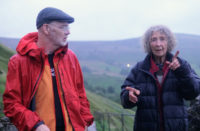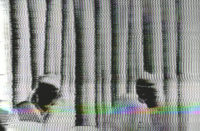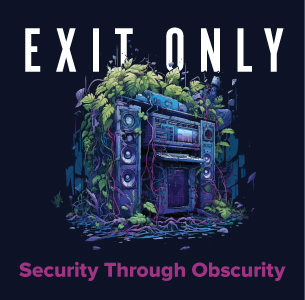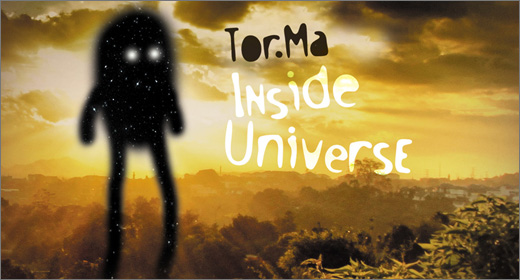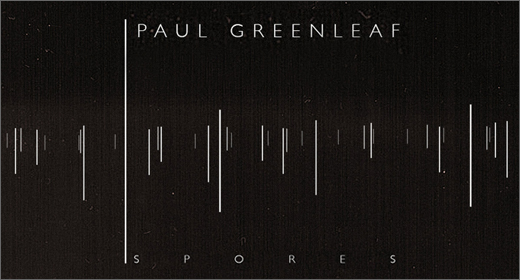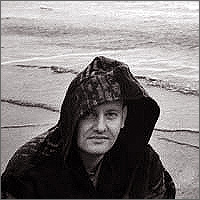
(01.12.07) On his website Tor Lundvall has a
brief piece about the history of his painting style, a style which
indelibly marks his musical efforts as well. Of the figures which
populate his artwork, he says they are “merely passing through the
mystery and silence of the landscape.” His music — records filled
with ghostly ambience — is an interpretation of the mystery and
silence that so pervades the natural landscape. His last full-length
release, Empty City, is a record filled with echoes of
city-life, ambient memories of life and laughter that exist only as
faint tremors of sound in abandoned metropolitan areas. Recently, he
has released Yule, an EP of seasonal winter music that was
intended to capture the blurred impressions of distantly heard holiday
music. Again, Lundvall seeks out the phantasmal parts of the holiday
nights: the wisps of fog that creep down from the North Pole, the
subtle hints of laughter from Yuletide revelers, the mechanical hiss
of industrial infrastructure that powers the generators running behind
every light show.
Igloo caught up with Tor during the holiday season and asked him a few
questions about nature, painting, and the influence of the visual and
ephemeral world upon his musical creations.
Mark Teppo/Igloo :: You classify these last few records as
being “ghost ambient.” What was (or is) the impetus to create this
sort of music? Is there some chaos in the creation of this music (
i.e., the opportunity for the unexpected to find its way into the
work)?
Tor Lundvall :: That’s it exactly. Unexpected sounds and
phrases manifest themselves unintentionally into my recordings from
time to time. They seem to come out of nowhere. “Ghost Ambient”
seemed to be the best way to describe what was happening in the
studio. The term was also the perfect way to pigeonhole myself before
anyone else did!
Igloo :: You mention on the liner notes for Last Light
(2004) that you “remember watching the blueish-grey light shimmering
outside, and hearing distant sounds echoing far away, eventually
sinking into silence and stillness.” Are your paintings and music an
effort to express the emotional impact of these moments?
Lundvall :: My work is the shadowy after-effect of my personal
experiences. I am constantly absorbing things from Nature and from
life in general which eventually end up influencing my work. I’m not
consciously trying to express my emotions while I’m working on a
painting or recording music. Nevertheless, I’m sure that my emotions
play a large role in the creative process, whether I’m aware of them
at the moment of creation or not.
Igloo :: It’s not a stretch to consider William Basinski,
Rapoon or Stars of the Lid as being “ghostly.” Are they influences or
contemporaries?
Lundvall :: They are both. You managed to pick three of my
all-time favorites here. I only discovered Star of the Lid a couple
of years ago, however their discs are on constant rotation while I
paint now, especially during the summer. There is certainly a ghostly
quality to the work of all of these music makers. Happy accidents,
overlapping layers of sound, and the endless mystery of reverb and
echo usually produces the most interesting music in the right hands.
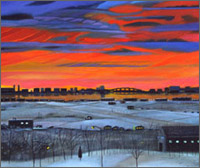
Igloo :: Robin Storey (Rapoon) is also known for his artwork
which is used for his records. As a fellow painter/musician, what is
your impression of his audio/visual presentation?
Lundvall :: I adore Robin’s artwork and music which always
compliment each other beautifully. I’m glad he released the Alien
Glyph Morphology DVD which I enjoyed. The odd thing is, I’ve
conjured up so many of my own imaginary landscapes around Robin’s
music over the years, that I actually found it difficult watching his
own visuals at play!
Igloo :: As you’ve been painting longer than you’ve been making
music, it follows that some of the music stems from paintings. Is
painting part of the process of the music (i.e., they come first and
then the music is a reaction to the oils)?
Lundvall :: This was probably the case early on; however, not
so much in recent years. At this point, both the painting and music
have become inseparable. Paintings influence the music, and the other
way around. I usually mention my album The Mist (2001) when
I’m asked about the relationship between the two pursuits. The
paintings and music from that period were feeding off each other like
never before.
Igloo :: On the liner notes for Empty City, you recall
how a view from your brother’s window supplied the impetus for the
record. “The sun was slowly sinking over the cold and lonely
buildings below, casting brilliant orange and crimson light across the
room. I watched the luminous patterns change shape and color as they
drifted across the walls, like chapel windows in the stillness of a
monastery.” Clearly, the art on the album is an attempt to capture
this light, but how do you translate such a visual scene into music?
Or is it more visceral than that? Are paintings a recreation for the
eye and the music is a version for the ear.
Lundvall :: Both mediums ultimately feed the soul and the
imagination, whether the work is taken in aurally or visually. I
always approach music from a visual perspective, so I am always
envisioning things as I record. Hopefully, the listener will create
their own private worlds around the music as well.
Igloo :: Is the Yule EP a beginning of another seasonal
cycle of releases or it simply a one-off effort to capture the sense
of a seasonal environment?
Lundvall :: It’s more of a one-off recording. The tracks just
came together a few years ago and really captured the atmosphere of
the season for me, and also evoked memories from my childhood around
my home town. Initially I printed up a few CDRs just to send to
friends over the holidays, but then I felt it deserved a wider
audience.
Igloo :: Yule contains “The Falling Snow,” a song you
mention as being a “constant companion” over the last nine years as
you paint. Is music an integral part of the painting process? Your
music or the work of others?
Lundvall :: Absolutely. Some people require total silence
while painting, but I am constantly listening to music in an active
way and not merely as background music. I listen to my own recordings
and also to the work of various others. I’ve created some of my
favorite paintings listening to Zoviet*France, for instance.
Igloo :: Does your compositional process change during the
seasons? I assume the light is different, and it colors landscapes
differently. Does that affect the way you paint or make music? Does
the seasonal differences push different musical moods upon you ( i.e.,
what you listen to when you paint)?
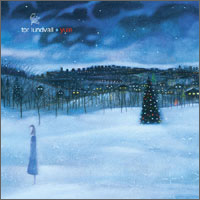
Lundvall :: The seasons play a huge role in my life both
artistically and otherwise, and my work is constantly shifting and
evolving along with them. The seasons also effect the music I listen
to while I paint. Late autumn is always Labradford time. Now I’m
getting ready to put Thomas Köner and Deathprod on rotation as
winter sets in.
Igloo :: Is your work synthaesthetic? If viewed/heard
separately, would the other be an effort to paint the music or compose
an oral rendition of the oil canvas? Or are the emotional triggers
separate but related?
Lundvall :: They are definitely related. Although my paintings
and music represent a “whole” when experienced separately, they become
another entity entirely when seen and heard together. I’d like to
create an installation or exhibition combining both my paintings and
music some day.
Igloo :: After the holidays, what’s next?
Lundvall :: I’m going to start preparing The Mist for
reissue, however what form the reissue will ultimately take remains a
surprise. My New Year’s resolutions are always the same: paint more,
record more music, and try to exercise more. Well, two out of three
isn’t so bad…
End.







